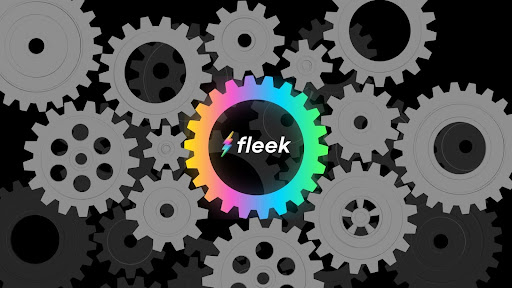
How Does Fleek Fit Into The DePIN Narrative?
DePINs (Decentralized Physical Infrastructure Networks) aim to integrate blockchain technology into real-world industries like data storage, communications, and energy grids. The goal is enhanced resilience and flexibility within these crucial infrastructure systems we rely on daily. Fleek plays a key role in this field as a platform that makes building and hosting DePINs accessible to a broader range of developers. Let’s examine how Fleek’s decentralized web hosting tools and infrastructure fit into the DePin narrative.
Fleek as a Gateway to Decentralized Infrastructure
Within the world of DePINs, Fleek functions as an accessible entry point for developers looking to build upon or leverage decentralized infrastructure services. DePINs integrate protocols like IPFS (InterPlanetary File System) for content-addressable storage or Filecoin and Arweave for distributed file storage with built-in economic incentives. Fleek offers tools and a streamlined interface to interact with these networks, reducing the need for developers to manage low-level blockchain interactions directly.
Fleek provides an abstraction layer, handling elements like IPFS pinning, content addressing, and interactions with decentralized storage providers. This allows developers to focus on building their applications on top of decentralized infrastructure without needing to become blockchain experts. By simplifying these interactions, Fleek democratizes participation in building out the DePIN ecosystem, potentially fueling broader adoption and accelerating the pace of innovation.
The Essential Components of DePINs & Fleek’s Role
DePINs rely on several fundamental building blocks, and Fleek’s platform simplifies how developers can integrate these building blocks. Let’s explore three key components:
- Content Addressing: IPFS utilizes content-addressing rather than location-based addressing as used in traditional web systems. This means files are retrieved based on a unique content-derived hash. Fleek handles managing IPFS interactions, making it easier for websites and applications to take advantage of IPFS’s distributed and resilient nature.
- Decentralized Storage: Networks like Filecoin and Arweave provide decentralized storage solutions. Fleek’s integration with these protocols offers developers a way to store application data across diverse nodes, eliminating single points of failure and potentially enhancing data integrity.
- Serverless Computing: Building a fully decentralized app often requires backend logic. Fleek’s support for serverless functions enables developers to deploy code snippets that run on demand without provisioning traditional servers. This complements the decentralized frontend elements within DePIN-driven applications.
By supporting these critical elements, Fleek facilitates the deployment, distribution, and execution of web applications within the DePIN space.
Practical Use Cases of Fleek Within DePINs
Fleek’s capabilities open doors for a range of compelling applications within the DePIN landscape. The examples below illustrate how Fleek aligns with the broader vision of building more resilient, flexible, and community-driven infrastructure through DePINs.
Censorship-Resistant Websites and Applications
Apps built on DePINs with Fleek can exhibit higher resilience against takedown attempts or external interference than standard web2 apps. By utilizing decentralized hosting and distribution, Fleek helps create and deploy applications with high censorship resistance.
Distributed Content Delivery Networks (CDNs)
DePIN architectures facilitate the potential for CDNs that minimize downtime and optimize content delivery. Messari, a leading blockchain research firm, has recognized Fleek as a crucial player within the CDN branch of the DePIN ecosystem.
Lower Infrastructure Costs
DePINs remove the need for intermediaries within the infrastructure system, effectively cutting costs associated with their services. This example is especially relevant when considering the exorbitant prices charged for cloud storage solutions by big tech companies such as Amazon and Microsoft.
Community-Owned & Operated Networks
DePINs can empower communities to build and manage infrastructure tailored to their specific needs collaboratively. Whether it’s decentralized wireless networks, local energy grids, or other initiatives, Fleek can simplify the technical complexities involved in deploying and managing such projects.
Fleek’s Evolving Contributions to the DePIN Narrative
Fleek’s emphasis on usability and developer experience plays a significant role in accelerating DePIN adoption. Fleek offers an essential bridge for Web2 developers transitioning into the Web3 and DePIN space by simplifying interactions with complex decentralized technologies.
Fleek’s role as a facilitator and gateway is central to the evolving DePIN narrative. Its interface and integration with decentralized infrastructure services align with the key tenets of DePINs: resilience, openness, and community participation. The ability to easily build and leverage infrastructure grounded in Web3 principles empowers developers and unlocks new possibilities. If you’re keen on exploring the world of DePINs and Fleek, join the alpha today.
